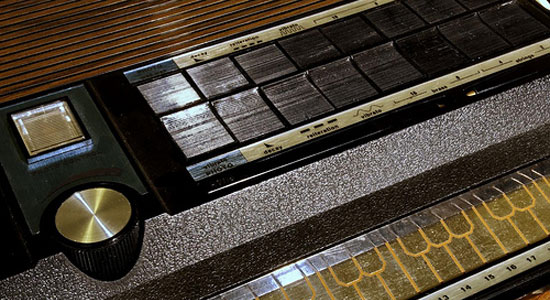 Fronted by the nervous guitar and earnest vocals of Richard Barone, the Bongos grabbed the torch from the Talking Heads to light the way into the 1980s for a second generation of eye-opening New York bands that sounded nothing like their predecessors. Dedicated to the proposition that the tired and huddled masses could still find comfort at CBGB (or at Maxwell’s across the Hudson River), the Bongos ruled the greater-NYC roost. A stimulating succession of solo releases, topped by this year’s Glow (Bar/None), leaves no doubt that Barone is still hitting on all cylinders, a vital and imaginative force in today’s music scene when most of his contemporaries have fallen by the wayside. Barone will be guest editing magnetmagazine.com all week. Read our Q&A with him.
Fronted by the nervous guitar and earnest vocals of Richard Barone, the Bongos grabbed the torch from the Talking Heads to light the way into the 1980s for a second generation of eye-opening New York bands that sounded nothing like their predecessors. Dedicated to the proposition that the tired and huddled masses could still find comfort at CBGB (or at Maxwell’s across the Hudson River), the Bongos ruled the greater-NYC roost. A stimulating succession of solo releases, topped by this year’s Glow (Bar/None), leaves no doubt that Barone is still hitting on all cylinders, a vital and imaginative force in today’s music scene when most of his contemporaries have fallen by the wayside. Barone will be guest editing magnetmagazine.com all week. Read our Q&A with him.

Barone: If the Stylophone hadn’t existed, somebody would have had to invent it. Which, of course, it didn’t and somebody did. It happened during the most “space-age” of decades: the 1960s. And, of course, it was the young David Bowie who stumbled upon it, used it on his first hit, 1969’s “Space Oddity” and became the poster boy for this bizarre musical instrument. What’s unique about the little monster is, while ostensibly a keyboard, it is played using a stylus, which can slide and gliss over the keys with no delineation between keys. So it’s a super fluid sound. The pocket-sized classic models are admittedly limited in scale and range, but the mid-’70s 350S model is a giant, faux-woodgrain wonder with tons of tone and octave settings and … wait for it: a light-sensitive wah-wah effect built in! I used it all over my Glow album. My producer Tony Visconti, who found me my difficult-to-find 350S still in its original box with instruction book and lesson album (on vinyl), played dueling Stylophones on “Girl,” the T.Rex cover. And when we were all deciding what instrument should take lead on closing track “Glow Symphony,” it was no contest. The bizarre twist to the story is the instrument’s sudden reappearance in the marketplace now, in 2010, more than 40 years after its initial heyday in the U.K. To see them in places like Urban Outfitters, those trendy Japanese tech boutiques in the West Village and all over YouTube at first startled me, but now it all makes sense. After all, it was a futuristic instrument, and this is the future. Or something like that.
Video after the jump.
http://www.youtube.com/watch?v=s9dvAWFDbN4






